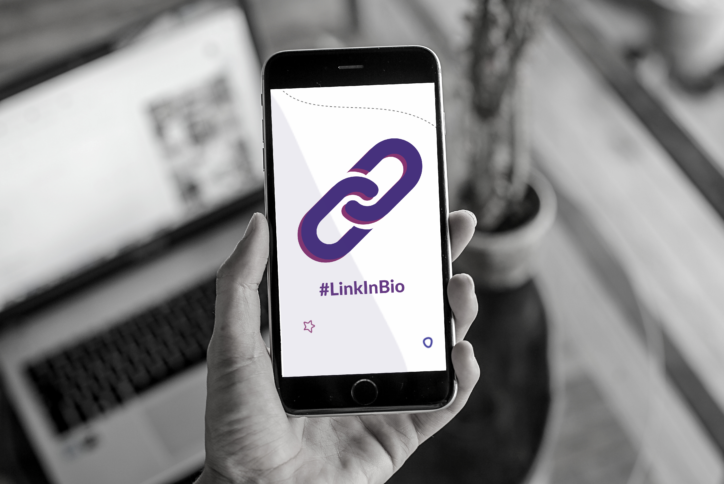It’s no secret — Instagram has developed into a highly effective marketing tool for businesses and brands. With its engaging photo and video-based content and 1.44 billion active monthly users, this platform presents an excellent opportunity to boost brand awareness and reputation and foster customer loyalty simultaneously. Nevertheless, while Instagram is easy to use, establishing and maintaining an effective brand account is not so simple. Creating a cohesive social media presence and generating bottom-line results can be tricky. One especially important factor is a strong linking strategy.
A clear linking strategy can increase your engagement and conversion rates, improve your search engine optimization (SEO), and help you get the most out of your social media marketing efforts. But each social media platform has different purposes, strengths, and demographics — so it’s essential to fine-tune your linking strategy depending on the platform.
In this post, we’ll explore the topic of social media linking strategy in more detail and outline five best practices to optimize your Instagram linking today.
Instagram Organic Linking Strategy: Increase Conversion with These 5 Best Practices

What is Social Media Linking Strategy?
To put it simply: A social media linking strategy addresses the way that you go about linking to external websites on your social media accounts. By optimizing your practices by channel, you are making sure that your links are as user-friendly and effective as possible.
A good linking strategy not only ensures that the way you present your links is the best it can be given the parameters of a specific social media channel, but also that the links themselves are aesthetically coherent and reflect well on your brand — as they are an important branding element.

Why Is Social Media Linking Strategy Important?
Remember the classic digital marketing analogy: Social media is like your storefront window? Of course, with the rise of social commerce, this is not as true as it used to be — these days, you might think of shoppable social media as more of a to-go window!
But for our purposes here, the comparison still works. You might have the most eye-catching and engaging social media in the world, but a storefront display isn’t much good unless the customer enters the store. Links are how your potential customer can do that.
This is especially important if you choose to run any sort of campaign, in which it is often key to route traffic to a landing page or opt-in form.
More broadly, well-optimized links allow your audience to take further action beyond simply engaging with your social media content, like visiting your website, consuming your additional content or other information, like a blog, video, or podcast, browsing your products, or generally learning more about who you are and what you do. And links with proper tracking will also give you a lot of insight on the performance of that channel and its impact on the conversions you’re tracking.

What is S2’s Approach to Organic Social Media Linking Strategy on Instagram?
At Sociality Squared, we apply a range of best practices to our linking strategy to make sure our client’s social media profiles are driving traffic to their websites or campaign landing pages. Keep reading below to learn about five of the most vital elements of our strategic approach to organic Instagram linking.
Anyone who has ever tried to link off of Instagram knows that clickable links are limited to just the bio and as link stickers in Stories, so it’s critical to make the most of your links and be intentional with how you use them.
1. Use Linktree or Solo.to to Feature Multiple Links on Your Profile
One of the easiest but most impactful ways to use links on your Instagram profile is to place one right in your bio. In fact, Instagram even has a specific place for you to do so. However, there is a drawback: You can only place one link in your bio at a time.
That means if you link to your website, there is no great way to provide clickable links to additional content. For example, if you wish to share weekly blog posts (like this one!), you’ll have to change the link each week.
That’s where link services come in. These are basically easily-generated landing pages where you can place multiple links you want to share, like a newsletter signup, products, a landing page, blog posts, and more — all in one place.
Our go-to services at S2 are Linktree and Solo.to, which both have freemium versions offering a smooth, customizable, visually appealing experience, as well as a Pro version, which adds more benefits, options, analytics, and integrations.
Sprout Social has a link-in-bio service, too: SproutLink. Of course, to truly get the most out of SproutLink’s workflow and data, we would also recommend using Sprout Social’s full platform of powerful publishing, scheduling, listening, and analytics tools and integrations.
As a Sprout Social agency partner, we are always happy to talk about Sprout. In the case of choosing a link-in-bio service, however, it all depends on your needs, and Linktree and Solo.to can certainly fit the bill, too.
2. Include Links in Instagram Post Copy (Even Though They Are Not Clickable)
To the frustration of social media managers everywhere, Instagram does not allow you to include clickable links in the copy for your posts. Instagram’s reasoning for this policy does make some sense. When the platform did permit links in posts, years ago, it led to wide link-spamming in comments, and frequent hacking of profiles.
As a platform focused on visual media, Instagram simply isn’t intended to be as link-friendly as others, like Facebook, Pinterest, or Twitter.
As discussed above, Linktree and Solo.to can help mitigate this. Often, you’ll see Instagram post copy that instructs viewers to navigate to the “#LinkInBio” to explore further. We recommend this approach, and we also recommend including the link in post copy, as well.
It may sound a bit counterintuitive, as such links are not clickable on Instagram. But there are still some good reasons to include them. For example, millions of users do access Instagram from their desktop computer, and can easily copy and paste a link. Furthermore, it’s not uncommon for users to screenshot posts containing information they want to save for later. If someone screenshots your informative and engaging post, it’s a good idea to make sure their screenshot includes a call to action and a link. Plus, if a third-party service like Linktree goes down or is unavailable, your link remains available or more common, you’ll be updating links in your LinkTree and any old Instagram posts, you still want the link to be associated with it within the post and not only in LinkTree.
Links are an important branding element.
Last but not least, links are part of your branding and can help strengthen the awareness of what your website is by seeding it in the post descriptions as well.
Of course, it’s also a good idea for that link to be as easily readable, digestible, and usable as possible.
3. URL Shortening Services Like Bitly Can Create Short, Branded Links
URL shorteners like Bitly function as shortcuts, or redirects, for your links. That means you can create custom, shortened versions of your links.
For example, the full-length URL of our most recent post on the S2 blog reads as follows:
https://socialitysquared.com/social-media/follower-strategy/
That isn’t very user-friendly, especially if you have to retype it from a screenshot — and that’s on the shorter side when it comes to some URLs!
Fortunately, with Bitly, it’s easy to create a shortlink that leads to the same destination, but is a little easier to read, like this:
Bit.ly links are particularly useful when you have UTM tracking codes as part of your links and want to make the links shorter and more user-friendly.
By default, the links Bitly generates begin with the URL “bit.ly,” followed by a random string of letters and numbers. But as you’ll notice in this example, Bitly also enables you to edit the back half of your shortened URL. By doing so, you can add branding to your links, as we have done in this example. Beyond simply being a random string of characters, a branded link like this communicates something about what the viewer can expect when they click it while also including the “S2” brand.
Once created, Bitly links are designed to be permanent — and you can create up to fifty per month for free. (If you need more, Bitly has five pricing tiers, including a customizable option so that you can find the perfect fit for your needs. Furthermore, Bitly also provides analytics, so you can check how many times your links have been clicked!).
If you’re driving people to a website URL that’s a homepage or not a long link and without tracking, consider showing the full URL as a branding element without shortening it.
4. Add Swipe-Up Link Stickers to Instagram Stories
Instagram Stories are a great way to improve your brand’s visibility, get instant feedback, and interact with your audience in real-time. It’s also a great place to include a link.
By selecting the Sticker tool, you can easily add tappable links with customizable text to your Stories. In the past, only accounts with over 10,000 followers could take advantage of this feature, but as of last year, Link Stickers are now available for accounts of any size. Only one can be added to each Story frame, so keep that in mind as you’re linking off of Stories.
As Instagram stated when releasing this new functionality: “We made this decision based on feedback we heard from the community about how impactful it would be for creators and businesses of all sizes to benefit from link sharing to grow in the same way larger accounts do.”
It’s true — the impact and benefits are substantial, so make sure you are taking advantage of this feature!
5. Turn Followers into Customers with Instagram Shoppable Posts and Stories
Instagram Shoppable posts present an excellent opportunity for businesses to drive sales and create revenue directly from their social media channels.
If you have a Business account, it’s also relatively easy to get started. All you have to do is set up an Instagram Shop, and you can start tagging products (listed in your Shop) in Feed posts, Stories, and even Live broadcasts.
Upon tapping a Product Tag, your audience can discover more about a product, visit your website, or even make a purchase directly within the Instagram app (one caveat, though: Instagram’s transaction fees can be high, and using Instagram Checkout can cause you to miss out on valuable data and insights).
On the subject of social commerce data, Sprout Social, the industry-leading social media management software and Sociality Squared’s go-to, recently announced two new, first-of-their-kind integrations with social commerce leaders Shopify and Facebook Shops.
These integrations enable brands to leverage Sprout’s management and reporting capabilities and other CRM and help desk integrations to deepen and streamline transactions, interactions, and insights.
To learn more about how Sprout Social can help capture and manage the information you need from social commerce transitions, take a look at this recent S2 blog post.

Would You Like Some More Help?
Applying these best practices should be just one part of your larger social content strategy. If you’d like to discuss how Sociality Squared can help you bring the pieces together to tell your brand story and achieve measurable results for your business, reach out today. Stay tuned for all of the paid media tactics to link off of Instagram as well.
Subscribe to our monthly S2xAccess newsletter:

